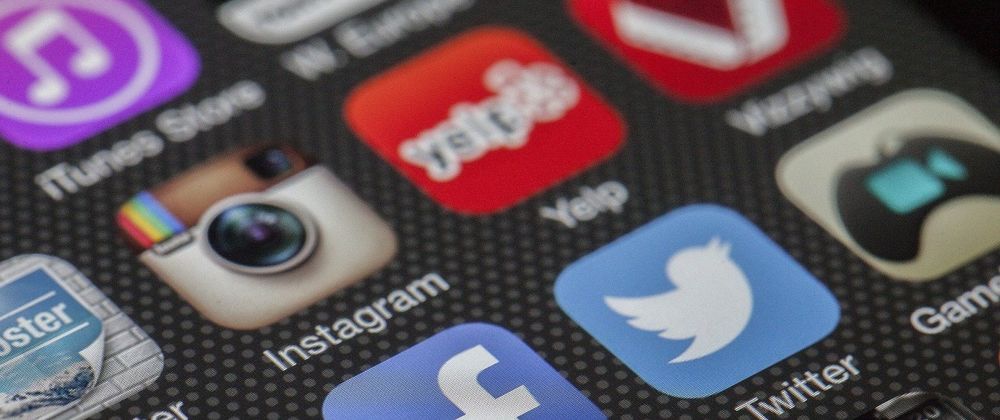“Every time I receive an email in pdf or image format, it hurts me. This will not be read by the screen-reading software I use. I’ll need someone to read it to me since it’s quite revolting “Sujit Gurung, a blind person, expressed his thoughts.
Gurung claims that when using Facebook, all picture descriptions are insufficient to convey the image, and auto-generated sentences are likewise insufficient to comprehend the image.
Social media has now become ingrained in our daily routines. As personal and professional use of social media grows, it’s critical to make sure that your friends and followers may access content in a variety of ways.
Physical accessibility, such as access to public buildings, workplaces, or highways, is only one aspect of accessibility.
It’s also crucial to make sure that the messages you post on social media will be seen by everyone. With millions of individuals utilizing social networking sites around the world, it’s critical to think about online accessibility.
Social media is the fastest-growing marketing tool, allowing users to quickly promote their businesses, distribute public service messages, and interact with friends and clients.
But how can you make this available to everyone? Bake accessibility into your information to ensure that everyone has access to it. Adding captions or sign language interpretation to your films makes them more accessible to a wider audience.
In addition, the ‘easy reading’ format, which consists of brief lines supported by pictures and graphics, makes the text more accessible to persons with learning and memory challenges. Information provided in simple language and brief sentences is referred to as easy read.
Images that refer to the meaning of the sentences back up this claim. It can also be beneficial to others; for example, those with low literacy levels, stroke survivors, and dementia patients will find the information more appealing.
The United Nations’ Convention on the Rights of Persons with Disabilities (CRPD) provides us with guidance under Article 9.
“People with disabilities have the right to participate in all elements of society on an equal footing with everyone else,” it says.
This includes physical access to the environment, transportation, information and communications, and other public facilities and services.” This has been ratified by 182 countries to date, and it is legally binding for those countries, including Nepal.
The convention emphasizes the importance of information and communication accessibility, stating that accessible information must be supplied as a reasonable accommodation.
Globally, social media usage is increasing by the day – and has increased even more since the COVID-19 pandemic.
Making your social media postings accessible is the proper thing to do if you want to be more accessible to individuals with disabilities. But what about the other advantages? To begin with, you will reach a larger audience.
People with impairments frequently represent the world’s largest untapped market. Second, any company or institution that is known for its commitment to accessibility benefits.
Value-driven companies, particularly those that genuinely commit to diversity and inclusion, are increasingly favored by audiences.
Connecting with your whole potential audience necessitates accessibility. More than one billion individuals, or 15% of the global population, have some sort of impairment.
When you factor in temporary and situational limitations, those numbers soar. Non-inclusive content effectively divides a substantial portion of the worldwide population. Simply speaking, accessibility is beneficial.
What does it mean to be accessible?
Remember that not everyone of your social media followers will need the same amount of technological access.
Those with visual impairments, for example, may use screen readers. People who are deaf or hard of hearing may need to communicate through sign language. Some persons have special needs in terms of learning, reading, or sensory stimulation.
When everyone can join in online engagement, it becomes more enjoyable. People are also adopting social media as a kind of therapy or to address stigmatized topics such as mental health because of its open nature and accessibility.
A more equitable and open society can be built through social media. By doing a few simple things, you can make your social content more accessible to persons who are blind, deaf, or have an intellectual handicap.
Remember to include ALT TEXT when uploading photographs to Twitter, LinkedIn, Facebook, and Instagram. This gives each image a basic written description. This will be read aloud to users who use screen-reading software.
Memes and gifs may be inaccessible to screen readers. Provide a descriptive description in the body of your message. The best option is to use plain text.
It’s important to remember that the initial letter of each word should be capitalized, as this makes hashtags much #EasierToRead for screen readers.
Captions are superior to subtitles because they describe all speech and sound, including background noise and music, guaranteeing that all video content is accessible. Many social media users nowadays watch videos with the sound turned off.
For some who use screen readers, transcripts of movies may be more convenient than captions. Transcripts are also handy for individuals who are short on time and want to get to the most crucial information.
Social media tales, such as Facebook or Instagram stories, are extremely popular. Please be advised that screen readers will not be able to read the text or photos on stories.
Accessibility for people with disabilities is improving as technology and social media progress.
Accessibility for the Deaf population can be improved with a caption on your social media and website. Captioned content is more interesting than stuff that does not have captions. Accessibility is crucial when developing content for personal or business usage.
As a result, you’ll be more accepting, friendly, and thoughtful of those who access information in diverse ways. Use the suggestions above to make your material more accessible and inclusive, so that more of your followers will like it.
(Gairapipli works for Handicap International as a Regional Communications Officer, covering India, Nepal, and Sri Lanka)
source: risingnepal



Latest comments (0)